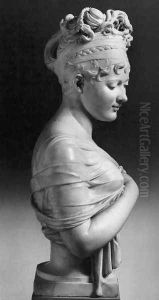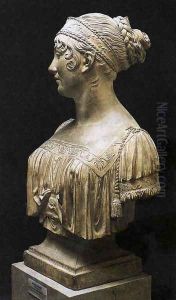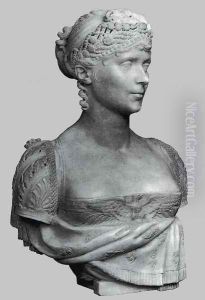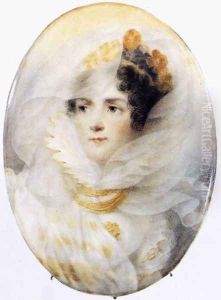Joseph Chinard Paintings
Joseph Chinard was a French sculptor who was born on June 20, 1756, in Lyon, France. He is known for his neoclassical sculptures, which were influenced by the art of antiquity. His works are characterized by their elegance and refinement, and he is considered one of the prominent sculptors of his time.
Chinard received his early training in Lyon, and then moved to Paris to continue his studies. He won the Prix de Rome in 1784, which allowed him to study at the French Academy in Rome. Chinard's time in Rome was crucial for his artistic development; he was deeply influenced by the classical sculptures he studied there, as well as by the contemporary neoclassical movement.
After his stay in Rome, Chinard returned to Paris in 1787, where he began to establish his reputation as a sculptor. He created a variety of works, including portrait busts, mythological scenes, and funerary monuments. His patrons included members of the French aristocracy and, later, figures from the Napoleonic era. Notably, Chinard created a famous bust of Napoleon's wife, Josephine de Beauharnais, capturing her elegance and poise.
During the French Revolution, Chinard's career faced challenges due to the political upheaval, but he managed to navigate these turbulent times. He continued to work and receive commissions, including creating the model for a statue of Liberty that was intended for the city of Lyon, although it was never realized.
Joseph Chinard’s works are known for their technical precision and their ability to capture the character of his subjects. He excelled particularly in terracotta, a medium that allowed for great detail and subtlety. His ability to render textures like skin and fabric was highly admired by his contemporaries.
Chinard's career thrived during the Napoleonic era, as he became a favored artist among the new elite. Despite his success, he did not forget his hometown of Lyon, and he contributed to the artistic life of the city, where a number of his works can still be seen today.
Joseph Chinard passed away on July 20, 1813, in Lyon. His legacy includes the many sculptures that reside in museums and collections in France and around the world. His contributions to neoclassical sculpture continued to influence artists long after his death, and his work remains a testament to the elegance and classicism of the era in which he lived.



